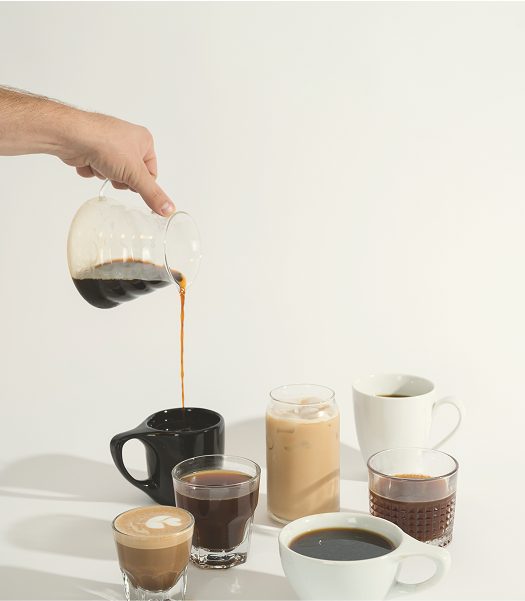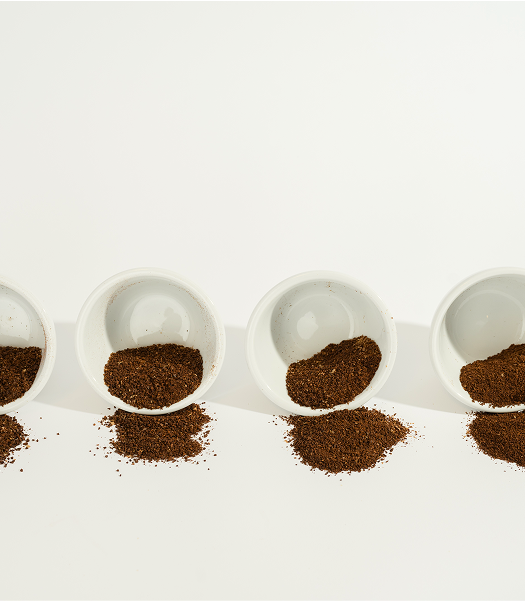Free Shipping on Orders Over $50
Anaerobic coffee fermentation processes coffee cherries (or depulped parchment) in sealed, oxygen-limited tanks to steer microbial activity and flavor development. Done well, it yields vibrant aromatics and layered sweetness; done poorly, it risks phenolic taints and instability. At YIELD Coffee Roasters, we vet anaerobic lots for cup clarity, cleanliness, and consistency—so your menu delights without surprises.
If you’re new to tasting language, calibrate with coffee flavor profiles, then review brew fundamentals in brewing basics and device guides like v60 or chemex. For a farm-to-cup overview, see coffee from seed to cup.
What “Anaerobic” Means in Coffee Processing
Producers place whole cherries (or depulped parchment) into sealed tanks, often with pressure-relief valves. Limiting oxygen shifts the microbial mix and the pace of fermentation, encouraging ester formation and distinct fruit-forward aromatics. Tanks may be agitated or bled to manage pressure; time and temperature are controlled to prevent off-flavors.
- Inputs: cherry ripeness, tank cleanliness, temperature, pH, Brix.
- Controls: time (hours to days), pressure management, periodic sampling/cupping.
- Post-fermentation: washed, honey, or natural style drying, then milling, storage, and export.
How Anaerobic Processing Affects Flavor
- Aromatics: tropicals (guava, mango), red fruits, florals; sometimes spice notes.
- Acidity/body: rounder acidity with elevated perceived sweetness; texture can feel denser.
- Risk: if mismanaged, volatile “boozy” or phenolic notes; we screen against this in sourcing and intake QA—see mold in coffee for broader storage/handling controls.
Want a benchmark flight to train your team? Start with the taste of YIELD sampler, then compare against single-origin releases like ethiopia sidama when available.
Brew Guidance: Filter, Immersion, and Espresso
Filter (V60/Chemex/Kalita)
- Ratio 1:16, ~198–200°F. If the cup feels heavy or muddled, coarsen grind one click and shorten total contact time by ~10–15 seconds (see v60, chemex).
- Agitation: keep pours gentle; over-agitation can emphasize ferment tones.
Immersion (French Press, Cold Formats)
- French press at 1:15, 4:00 steep around 198°F—target clarity with a slightly coarser grind (see french press).
- For summer service, test flash-brew recipes and compare to your cold program (reference cold brew vs iced coffee).
Espresso
- Start 1:2.2–1:2.4, 25–30s, moderate temp. If fruit reads “boozy,” lengthen the ratio slightly and reduce temp by 1–2°C. For a reliable house option, keep medium espresso blend on bar and rotate anaerobic lots as a guest single origin.
QA Signals We Validate Before a Release
- Clean cup: no volatile/phenolic taints; fruit clarity over fermentation.
- Repeatability: multiple sample roasts and brew methods to confirm stability.
- Green metrics: moisture and water activity in range; storage checks to mitigate spoilage (aligns with wholesale ordering and inventory rotation).
- Menu fit: where it shines—signature drinks, retail intrigue, seasonal features like sweater weather.
Training and Rollout
Equip staff with a clear story: “Sealed-tank fermentation that enhances fruit and sweetness—clean, not funky.” Reinforce with a short cupping using our cupping guidelines and add time on the bar with barista training. For onboarding, use the wholesale guide and align on brew specs from brewing basics.
FAQs: Anaerobic Coffee Fermentation
Is anaerobic the same as natural?
No. Anaerobic refers to the fermentation environment (sealed, low-oxygen). A lot can be anaerobic-washed, anaerobic-honey, or anaerobic-natural depending on what happens before/after the tank phase.
Why do some anaerobic coffees taste “boozy”?
That’s typically a control issue—temperature, time, or sanitation. We reject lots with volatile off-notes; your guests should taste fruit clarity, not ferment.
How should I describe it on menus?
Simple and concrete: “Sealed-tank fermentation for elevated fruit sweetness and layered aromatics—clean finish.” Offer a sample pour next to a classic washed like ethiopia sidama to highlight contrast.
Ready to expand your program beyond single lots? Explore rotating features alongside core blends like relational blend or seasonal releases, and keep guests engaged with subscription options such as the coffee club subscription.






